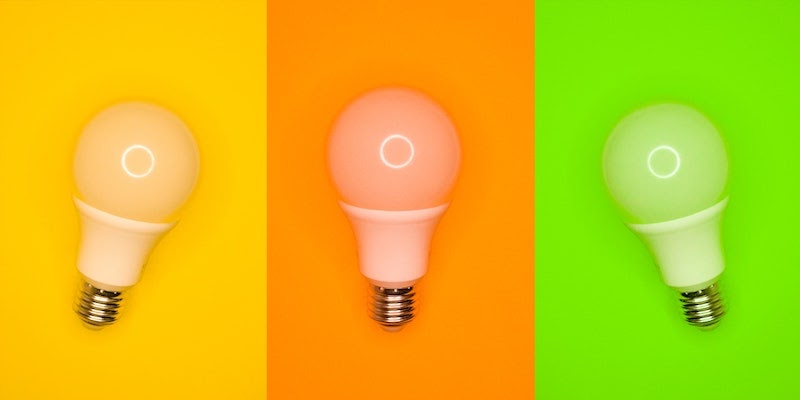As lighting technology advances, the prevalence of LED light sensitivity could be on the rise. LED stands for light-emitting diode, which is a semiconductor light source which lights up when power moves through it. As the technology has advanced and decreased in price, LED lighting is becoming more and more popular. It’s extremely efficient, doesn’t run hot, and emits a bright artificial light that many people like.
But unfortunately for others, LED lights can trigger unpleasant symptoms, like migraine.
With so many LED bulbs and fixtures around these days, it makes sense that LED light sensitivity would become more noticeable. In this article, we’ll discuss what LED light sensitivity is, how it feels, and why you may be sensitive to it. We’ll also offer some facts about LED lights and migraine, and how you can get relief.
What is LED Light Sensitivity?
Photophobia or light sensitivity is most often discussed in relation to fluorescent lighting or the light from digital screens. If you’re light sensitive, there’s a chance that LED lights are a problem for you, too. Sitting next to an LED lamp your photosensitivity may kick in, causing a host of unpleasant symptoms.
Symptoms of LED Light Sensitivity
If you’re sensitive to LED lights, you’ll likely notice a pattern of symptoms when you’re exposed to it. These aren’t necessarily related specifically to LED lights, but they could be. Generally speaking, the signs that you’re sensitive to LEDs include the following photophobia symptoms:
- Eyes hurting
- Headache
- Nausea
- Excessive blinking or squinting
- Eye inflammation
- Dizziness or vertigo
- Burning or watery eyes
- Eye dryness
- Seeing bright colored spots
- Feeling that normal amounts of light are too bright

How You Might Be Exposed to LEDs
Whether you realize it or not, you probably experience LED exposure every day, at least for brief periods. You probably know whether you’re using LED bulbs at home, but there are a number of other places where LED lighting is common.
- Interior car lights
- Newer car headlights (a big source of nighttime glare)
- Computer screens
- TV screens
- Smartphones
- Holiday lights on Christmas trees and homes
- LCD devices (many are actually back-lit by LED)
As the price of LED bulbs and fixtures has come down, we've begun to see even more of it in retail and office settings. Compact fluorescents were once thought to be the ultimate replacement for incandescent bulbs, but LEDs are becoming more and more prevalent because of their efficiency.
Why You Might Have LED Light Sensitivity
While light sensitivity might be triggered by any kind of light you can think of, LED bulbs have certain characteristics that could affect light sensitive people in adverse ways. Those characteristics include:
Brightness
If you have light sensitivity, you don’t tolerate bright light very well to begin with. But as the brightness of the light goes up, so do your symptoms. Part of the reason why LED lighting is so popular is because it’s a bright light that costs very little to operate.
As opposed to an incandescent bulb, an LED bulb will put out a lot more light while consuming a lot less power. Even compared to fluorescent lighting, you can get the same brightness while spending less money on energy with LEDs. This is great for businesses, schools, and homes who are looking for more bang for their buck. But if LED exposure affects you poorly, you may end up wanting to bang your head against a wall.

Wavelength
As most people with light sensitivity can attest, certain types of light are notoriously troublesome for them. Part of the reason for this is the color or wavelength of the light. LED bulbs emit blue light, which is known to trigger symptoms. In fact, when FL-41 lenses were developed, they were created to block the blue wavelengths emitted by fluorescent lighting in particular. Since then, Axon Optics with Avulux® lenses for migraine and light sensitivity has taken these lenses a bit further and refined them into light sensitivity glasses.
LED light bulbs are available in different color temperatures or hues. You might see them labeled as warm, neutral, or white (also called daylight). A lot of people like the perceived brightness of the daylight bulbs. However, the cooler white light emits more of the blue spectrum, which is more likely to affect light sensitive people.
Flickering
Much like fluorescent lights, LED lights don’t provide smooth, continuous light. On the contrary, they put out a high-frequency flicker which is imperceptible to the eye, but can still affect sensitive people. Flickering is known for triggering light sensitivity symptoms, including migraine.
Can LED Lights Cause Migraine Headaches?
While not directly studied, there’s evidence to suggest that LED lights could trigger migraine attacks and headaches. This is due to the high concentration of blue light emitted from LEDs. Since certain blue light has been shown to trigger and exacerbate migraine headaches, we can infer that LEDs may also trigger and worsen migraine headaches.
Additionally, published reports have indicated that overexposure to the blue light emitted from LED bulbs can be harmful to your eyes and disrupt your sleep.
As we discussed earlier, the flickering of many LED lights can result in adverse effects like headaches and visual problems. These may include trouble focusing, eye strain, bright light sensitivity, and even trigger migraine attacks in light sensitive individuals.
Tips for LED Sensitive People
There is no cure for light sensitivity. Fortunately, by taking some practical steps to mitigate your exposure, you can significantly reduce your symptoms. Here are a few ideas.

Wear Axon Optics With Avulux Lenses
Our lenses, made by Avulux, work by blocking up to 97% of the most harmful blue, red, and amber light while allowing the soothing green light in. They’re not FL-41 — they’re a significant upgrade and have been shown to be effective for people with light sensitivity. As an easy and completely non-invasive tool, these glasses could significantly improve your daily life with migraine and light sensitivity.
These glasses have been a life saver for me at work. I currently work in a basement with LED lights with no natural light. I was struggling with headaches by the end of each day and these glasses are a miracle!! Thank you. I highly recommend them!
Use Filtering Software
Rather than turning down the brightness of your computer, phone, or TV, check your settings. Many devices let you adjust from cooler to warmer. You’re better off adjusting toward the warmer spectrum as it will likely be less blue. There are also apps such as f.lux, Iris and Sunset Screen that are worth looking into.
Reduce Exposure at Night
If you find that blue light from TVs and other sources (likely LED lit) disrupt your sleep, try cutting back your use within a few hours of bedtime. And during the evening, while you do use your devices make sure you do so in a well-lit environment. The increased contrast of using an LED-lit device (such as a smartphone) in the dark can produce more sensitivity and eye strain.
Use Alternate Sources
For many people with photophobia, natural light is much more tolerable. Try opening your blinds, using less irritating incandescent bulbs, and pay attention to how the different light sources make you feel.
Use Barriers and Other Strategic Tools
At work and in other environments, you can take steps to reduce your exposure to LED light by using the helpful tips in this article. The article is focused on LED lighting, but the tips can definitely be applied to fluorescent lights as well.
Have questions about LED light sensitivity or light sensitivity glasses? We want to hear from you in the comments below. Tell us how we can help.
References
Source: Shedding Light on Photophobia. Kathleen B. Digre MD, K.C. Brennan MD. Journal of Neuro-Ophthalmology: March 2012 – Volume 32 – Issue 1 – p 68-81. doi: 10.1097/WNO.0b013e3182474548
Source: Main A, Vlachonikolis I, Dowson A. The wavelength of light causing photophobia in migraine and tension-type headache between attacks. Headache. 2000 Mar;40(3):194-9.
Source: Kim DJ, Lim C-Y, Gu N, Park CY. Visual Fatigue Induced by Viewing a Tablet Computer with a High-resolution Display. Korean Journal of Ophthalmology : KJO. 2017;31(5):388-393. doi:10.3341/kjo.2016.0095





